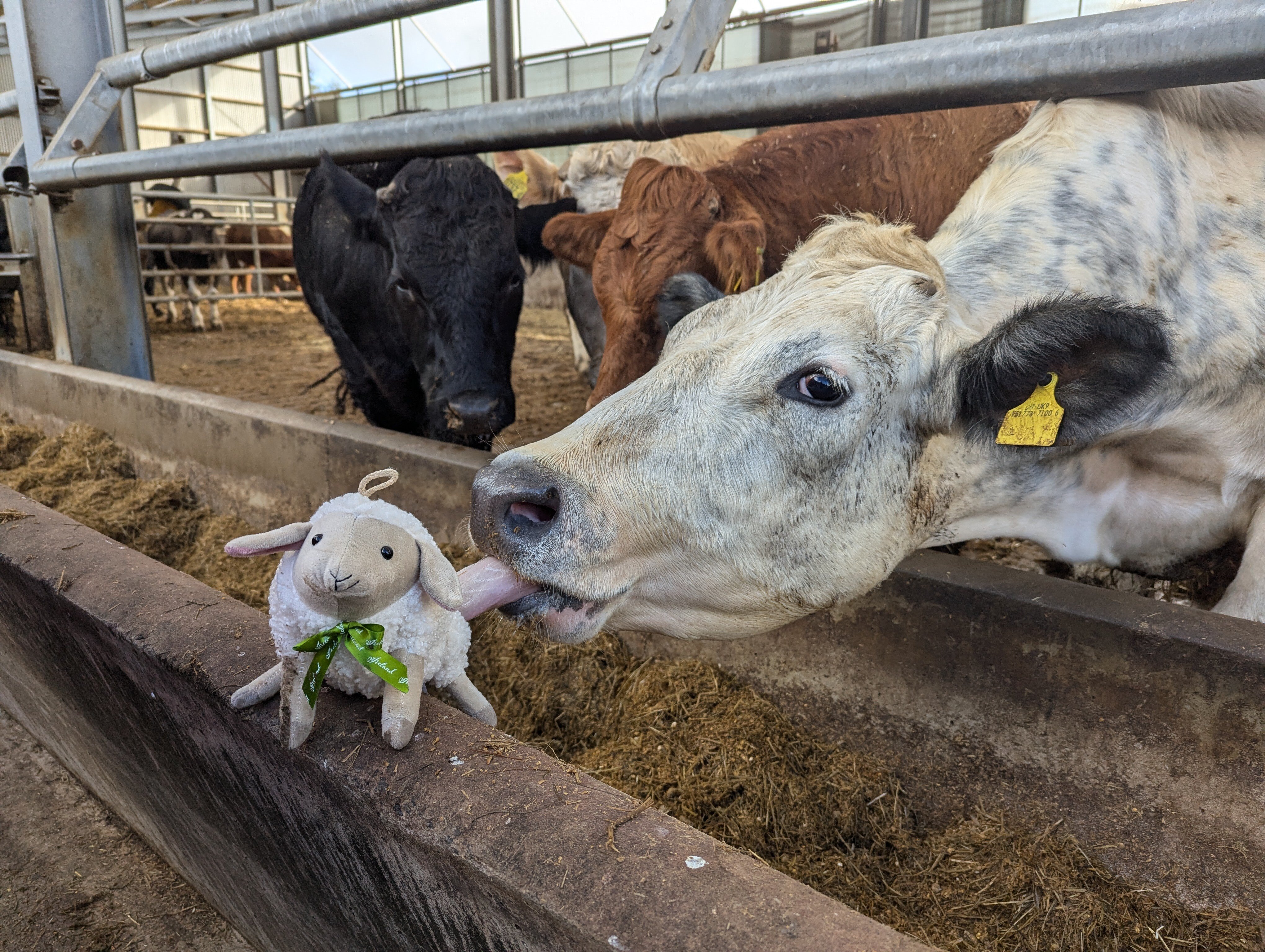In the food industry, risk management plays a crucial role in safeguarding public health and maintaining consumer trust. This guide identifies how businesses can effectively use it to assess and mitigate potential hazards within their operations.
In the fast-paced world of food production and distribution, ensuring the safety and quality of your products is paramount. That means having an effective risk management plan in place. But what does that involve?
The first step is to understand the fundamentals of risk management in food safety. Then assess how your business can effectively identify and mitigate against potential hazards within your operations.
What is risk management in food safety?
Risk management in food production focuses on systematically identifying, evaluating, and mitigating risks to maintain the highest possible safety standards. This proactive approach is essential for preventing incidents that can harm consumers and damage a business' reputation.
What are the key components of risk management in the food industry?
-
Identification of risks: The first step in risk management involves identifying potential hazards that could affect food safety. These might include biological, chemical, or physical hazards that can occur at various stages of the food supply chain.
-
Evaluation & prioritisation of risks: Once risks are identified, they must be evaluated to determine their potential impact. This assessment helps when prioritising what requires immediate attention and resource.
-
Implementation of control measures: After evaluating the risks, appropriate control measures are implemented to mitigate them. These measures could range from simple procedures like enhanced hygiene practices to more complex strategies such as adopting new technologies so that products can be traced throughout the supply chain.
What role do new technologies play in risk management?
Technologies are transforming how businesses manage food safety risk. This includes innovative tools such as blockchain-style traceability, artificial intelligence to predict contamination risks, and IoT (Internet of Things) for real-time monitoring of production processes. These technologies increase accuracy and speed up the response time to potential hazards, allowing for more proactive risk management.
Five examples of food safety risks
Cross-contamination in food processing
Cross-contamination is a significant hazard in food safety management, particularly in environments where both raw and ready-to-eat foods are handled. The transfer of harmful microorganisms can occur via shared equipment, surfaces, or during food handling by staff. To mitigate this risk, food industry professionals can implement stringent separation policies, use colour-coded tools to differentiate uses, and guarantee rigorous, frequent cleaning and disinfection protocols are followed. Advanced microbial genomic tracking techniques can help identify contamination sources more effectively, enhancing corrective actions.
Allergen contamination
Effective risk management requires a comprehensive allergen control plan that includes cleaning procedures to remove allergens and regular training of personnel on allergen awareness. Techniques such as ATP swab testing and allergen-specific lateral flow tests can be employed to verify surface cleanliness and the absence of allergenic residues before beginning new production cycles.
Chemical contamination
Chemical hazards in food production may arise from inappropriate use of cleaning agents or contamination with agricultural chemicals like pesticides or herbicides. To prevent such risks, strict protocols for the use and storage of chemicals can be established, alongside clear labelling and segregation in storage areas. Residue testing is implemented both before production and after cleaning processes to confirm the absence of harmful chemical residues. Additionally, training on the correct dilution and application methods for cleaning chemicals can be provided to all relevant personnel to prevent accidental food contact.
Biological hazards
Biological hazards stem from the presence of pathogenic microorganisms that can proliferate due to inadequate cooking, improper temperature controls, or substandard hygiene practices. Enhancing microbial safety involves maintaining strict temperature control through automated monitoring systems, applying HACCP principles rigorously, and ensuring thorough thermal processing and rapid cooling techniques. Regular microbiological testing and environmental monitoring programs can help in detecting potential outbreaks and applying swift corrective measures.
Physical hazards
Physical contamination in food manufacturing can result from broken equipment, packaging material flaws, or improper manual handling. To address these risks, adopt advanced detection technologies such as X-ray inspection systems, metal detectors, and optical sorting equipment, which can identify and remove foreign materials. Regular equipment maintenance and employee training on the importance of vigilant handling are also crucial to prevent physical hazards.
For additional detailed guidance on best practices in food safety, including how to develop effective food safety systems, you can refer to the World Health Organization’s comprehensive overview.
The principles of food safety risk management
The general principles of food safety risk management, particularly those outlined by the Hazard Analysis and Critical Control Points (HACCP) framework, provide a systematic approach to identifying and controlling potential food safety hazards. These principles are connected to practical strategies that ensure their effective application.
General principles of food safety risk management and their application
1. Hazard analysis: The first step in HACCP involves pinpointing potential hazards —biological, chemical, or physical — that could impact food safety. This essential step lays the groundwork for developing preventative measures. By thoroughly understanding these specific hazards, it becomes possible to establish targeted procedures that effectively reduce risks.
2. Critical Control Points (CCPs): Determining CCPs involves recognising stages in the production process where hazards can be controlled, eliminated, or reduced to safe levels. This principle supports both preventative and response strategies by defining where controls must be strictest, such as during cooking or cooling processes, to maintain food safety.
3. Monitoring procedures: Regular monitoring of CCPs guarantees they remain within safe limits. This proactive surveillance aligns with ongoing training and hygiene standards, helping to maintain compliance among all employees with critical safety procedures, thereby preventing deviations before they lead to safety incidents.
4. Corrective actions: When monitoring indicates a CCP is out of control, corrective actions are necessary. This principle underpins response strategies, where clear, predefined action plans are crucial for quickly addressing any deviation. These plans include isolating affected products and determining the cause to prevent future occurrences.
5. Verification procedures: Verification involves testing and other evaluations to confirm the HACCP system's effectiveness. This principle strengthens both proactive and reactive strategies by confirming that all safety measures and protocols function as intended, facilitating continuous improvements based on the outcomes of these verifications.
6. Record-keeping and documentation: Maintaining detailed records is essential not only for verification but also for tracing back any incident of contamination. Effective record-keeping supports robust response strategies by providing essential data that can be used in recall processes and communication with regulatory bodies.
A unified approach to managing food safety risks
By integrating these principles with corresponding strategies, food businesses can create a cohesive risk management system. Preventative measures such as training and hygiene standards are more effective when they are informed by a thorough hazard analysis. Similarly, response strategies are more targeted and effective when based on solid monitoring and corrective actions defined by HACCP principles.
This unified approach ensures compliance with regulations while remaining adaptable to emerging challenges and advancements in food safety technology. Aligning these principles with practical strategies bolsters the overall safety, quality, and reliability of food products, which in turn protects public health and sustains consumer trust.
Supply chain risk management in the food industry
Managing risks in a food supply chain involves understanding and mitigating the complexities associated with producing, handling, and distributing food products. Integrated risk management systems that span the entire supply chain can significantly improve visibility and control, meeting safety standards at every step.
Challenges in supply chain risk management
Common challenges include variability in supplier quality, logistical delays, and the difficulty of enforcing consistent safety standards across different regions. Top companies address these challenges by implementing stringent supplier audits, using sophisticated logistics software to track and manage inventory, and adopting universal safety protocols that meet or exceed local regulations.
International standards & regulations
Food safety risk management is heavily influenced by international standards and regulations such as those set by the Codex Alimentarius and the Global Food Safety Initiative (GFSI). These standards provide a framework for businesses to develop risk management plans and guarantee compliance with global food safety protocols.
Enhance your food safety standards with Foods Connected
Our Safety and Quality Management Software provides you with the tools you need to fully comply with regulations, manage risks effectively, and maintain the highest standards of food safety. From real-time data monitoring to comprehensive risk assessment features, our software is designed to support your operations in every aspect. Request a demo today to find out more.
.jpg)
Greer McNally
Greer has over 15 years’ experience writing about trends in the food and retail sectors. She lives in a little village by the sea in Northern Ireland and loves creating content that informs how people think about the food industry. A recent career highlight was interviewing the legend that is Dr Temple Grandin.
Stay up to date
Stay up to date
Browse Posts
- December 2025
- November 2025
- October 2025
- September 2025
- August 2025
- July 2025
- June 2025
- May 2025
- April 2025
- March 2025
- February 2025
- January 2025
- December 2024
- November 2024
- October 2024
- September 2024
- August 2024
- July 2024
- June 2024
- May 2024
- April 2024
- March 2024
- February 2024
- January 2024
- December 2023
- November 2023
- October 2023
- September 2023
- August 2023
- July 2023
- June 2023
- May 2023
- April 2023
- March 2023
- December 2022
- November 2022
- October 2022
- September 2022
- August 2022
- July 2022
- June 2022
- May 2022
- April 2022
- March 2022
- February 2022
- January 2022
- December 2021
- November 2021
- October 2021
- August 2021
/Blog%20Headers/shutterstock_1845178195%20(2).jpg)

/Blog%20Headers/shutterstock_1927957907%20(1).jpg)
/Blog%20Headers/shutterstock_2133827717%20(1).jpg)
/Blog%20Headers/shutterstock_2473376713.jpg)
/Blog%20Headers/shutterstock_2247276303.jpg)
.png)
.png)



/Graphics%20used%20in%20blogs/temple%20grandin%20visit%202024%2003.jpg)

.png)
/Blog%20Headers/shutterstock_2259314129%20(2).jpg)
.png)
.png)
.png)
.png)

.png)